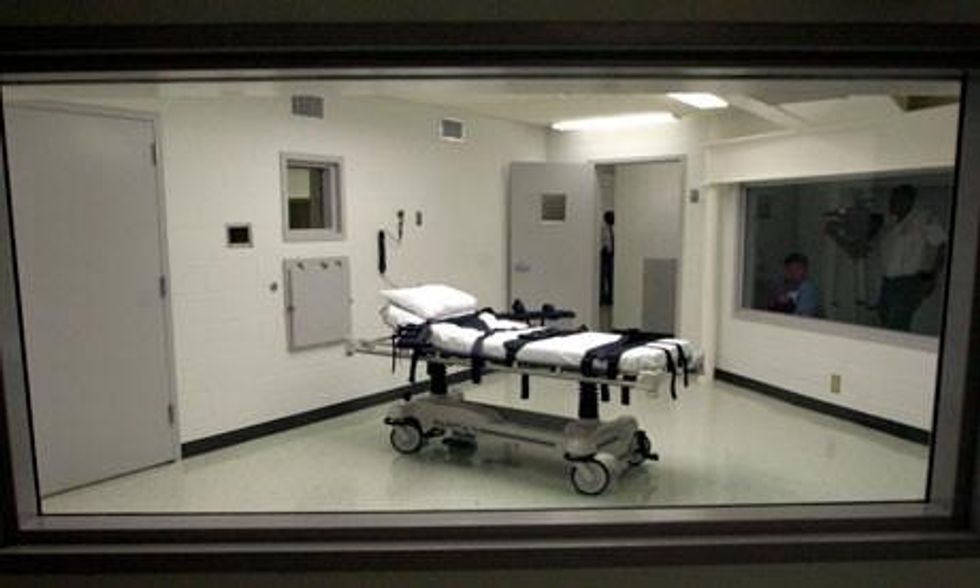The application of the US death penalty is unfair, arbitrary and racially biased. Whether a defendant receives a death sentence depends not on the merits of the case, so much as on his or her skin colour - and the race of the victim - and the county in which the murder case was prosecuted. Two recent news items in the US provide some illustrative context.
First, the issue of bias: the North Carolina Senate recently approved Senate Bill 9, a measure that would repeal the state's Racial Justice Act. The act, signed into law by Governor Bev Purdue in 2009, allows inmates to challenge their death sentences through statistical evidence of racial bias, including the exclusion of blacks from juries. Republican lawmakers and prosecutors opposed the law.
Fortunately, the governor vetoed SB9, which would have required prosecutors to openly confess to racism. This would have made it far more difficult for prisoners to prove racial discrimination in their sentence, despite evidence such as a study of North Carolina which found that defendants whose victims were white were 3.5 times more likely to receive a death sentence.
Second, the geographical anomalies: an analysis by the Houston Chronicle found that 12 of the last 13 people condemned to death in Harris County, Texas were black. After Texas itself, Harris County is the national leader in its number of executions. Over one third of Texas's 305 death row inmates - and half of the state's 121 black death row prisoners - are from Harris County. One of those African Americans, Duane Buck, was sentenced based on the testimony of an expert psychologist who maintained that blacks are prone to violence. In 2008, Harris County District Attorney Chuck Rosenthal resigned after sending an email message titled "fatal overdose", featuring a photo of a black man lying on the ground surrounded by watermelons and a bucket of chicken.
But this is nothing new: race and capital punishment in the US have always been inseparable. According to the Washington-based Death Penalty Information Center (DPIC), 56% of death row inmates are black or Hispanic. However, although racial minorities comprise half of all murder victims nationwide, a far greater proportion (77%) of the victims in capital convictions were white. The racial identity of the murder victim is thus a leading factor in determining who receives a death sentence in America. Amnesty International also reports that 20% of blacks nationwide were convicted by all-white juries.
Given the over-representation of black and Hispanic prisoners on death row, it is hardly surprising that of the 139 capital convicts found innocent since 1973, 61% have been of color.
The disparities multiply: nationally, Alabama ranks 23rd in population, but second in executions in 2011. In Alabama, African-Americans are 27% of the population, yet comprise 63% of the prisoners. And while 65% of murders involve black victims, 80% of death sentences involve white victims. Further, according to the Equal Justice Initiative, 60% of black death row prisoners were convicted of killing a white person, although cases involving black defendants and white murder victims represent a mere 6% of the murders in Alabama.
In the past 10 years, 23 Alabama death penalty cases have been overturned because prosecutors had illegally struck black people from the juries. Alabama has no black appellate judges, and only one black prosecutor. And nationally, 98% of prosecutors are white.
If the death penalty is highly racialised, it is a regional and local phenomenon as well. Over three quarters of executions take place in the states of the former Confederacy (including 35% in Texas alone) with their history of racial violence, lynching and arbitrary Black Codes and Jim Crow laws, which sanctioned death for blacks for certain offenses.
In death penalty states, the decision to seek the death penalty takes place on the county level at the discretion of the district attorney. Only 10% of the 3,148 counties in America have returned a single death sentence; a mere 1% of counties returned one or more death sentences per year.
According to data from DPIC, 15 US counties accounted for 30% of the executions since 1976 - which is less than 1% of counties in the country, and less than 1% of the total counties in all death penalty states. Nine of these counties are in Texas, and three are in Alabama.
Capital punishment has national and international implications, yet in the US - where a very small number of counties, largely in the South, accounts for a majority of the executions - local officials enjoy broad powers to prosecute and execute based on groundless assumptions and bias about race. Questions of guilt and innocence are subordinated to expediency and prejudice.


